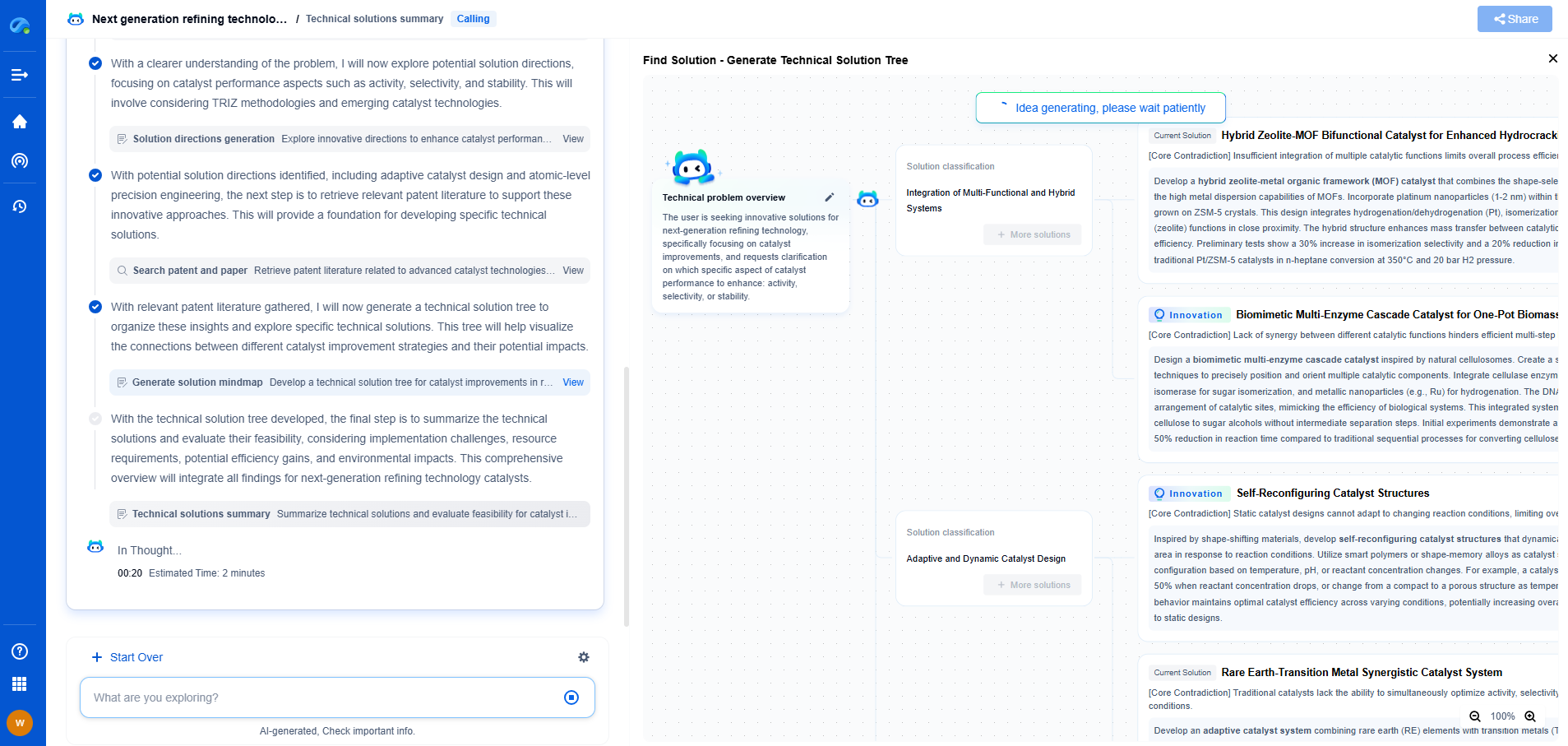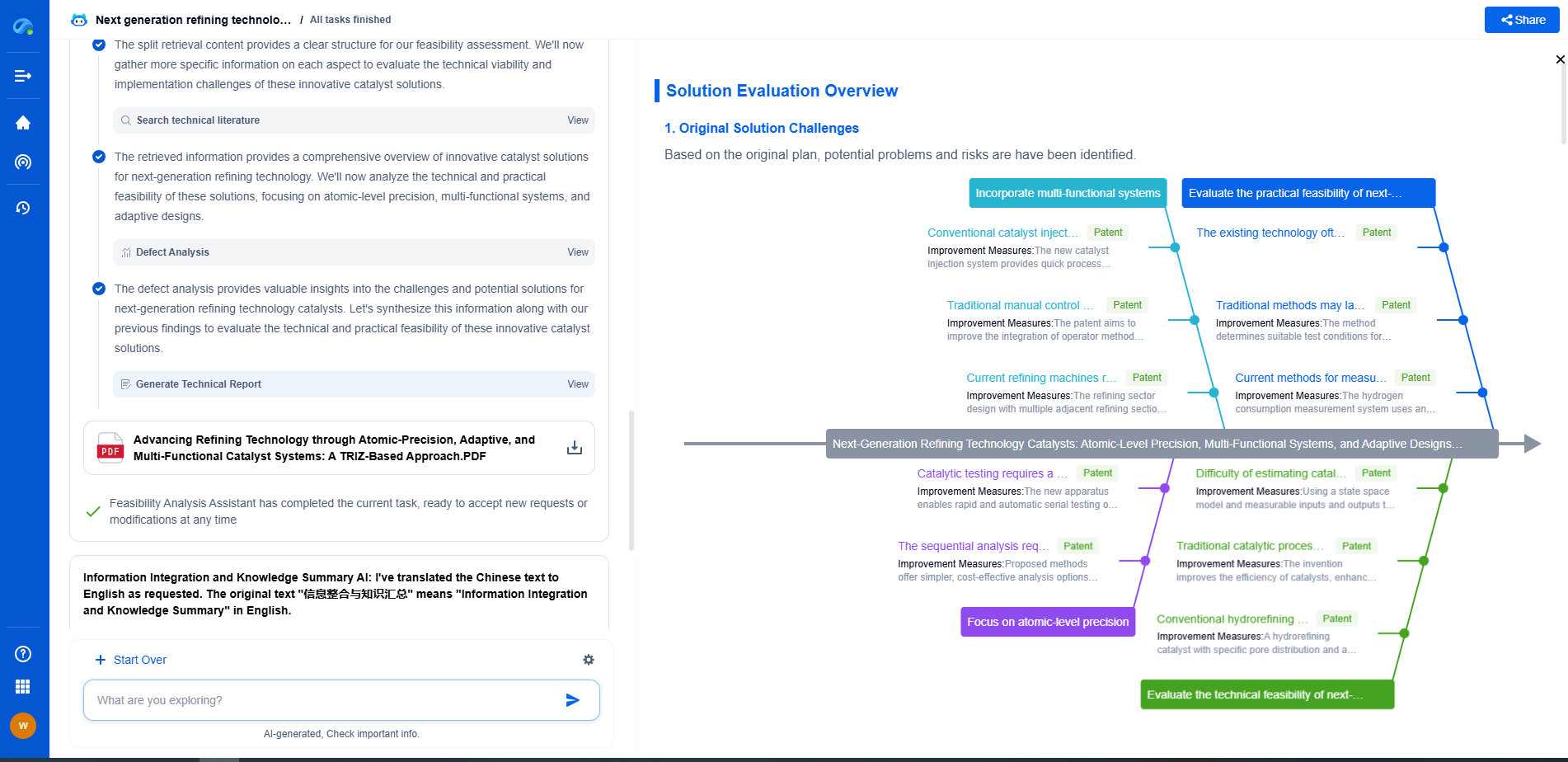Difference Between CNN and RNN
JUN 26, 2025 |
In the realm of artificial intelligence and machine learning, understanding the various types of neural networks is crucial for harnessing the power of these technologies. Among the most popular types of neural networks are Convolutional Neural Networks (CNNs) and Recurrent Neural Networks (RNNs). Each of these networks has unique characteristics that make them suitable for specific tasks. In this blog, we will explore the fundamental differences between CNNs and RNNs, highlighting their distinctive features, architectures, and applications.
Understanding Convolutional Neural Networks (CNNs)
Convolutional Neural Networks are a class of deep neural networks primarily used for processing grid-like data, such as images. The architecture of CNNs is inspired by the human visual system, making them highly effective in recognizing spatial hierarchies in visual data.
CNNs consist of several layers, including convolutional layers, pooling layers, and fully connected layers. The convolutional layers apply a series of filters to the input, extracting features such as edges, textures, and patterns. Pooling layers downsample the feature maps, reducing computational complexity and enhancing robustness. The fully connected layers then classify the extracted features into categories.
One of the defining characteristics of CNNs is their ability to capture spatial dependencies in images through locally connected neurons. This property enables CNNs to achieve state-of-the-art performance in tasks like image classification, object detection, and facial recognition.
Exploring Recurrent Neural Networks (RNNs)
Recurrent Neural Networks, on the other hand, are designed to handle sequential data where the order of input elements is significant. This makes RNNs particularly suitable for tasks involving time series data, natural language processing, and speech recognition.
The distinguishing feature of RNNs is their recurrent connections, which allow them to maintain a "memory" of previous inputs. This memory is represented as a hidden state that is updated at each time step, enabling the network to capture temporal dependencies and patterns in sequential data.
However, traditional RNNs can suffer from limitations such as vanishing and exploding gradients, which hinder their ability to learn long-range dependencies. To address these challenges, variants like Long Short-Term Memory (LSTM) and Gated Recurrent Unit (GRU) have been developed, providing improved performance in handling longer sequences.
Key Differences Between CNNs and RNNs
Architecture and Design: The primary distinction lies in their architectural design. CNNs are characterized by their use of convolutional layers to process spatial data, while RNNs possess recurrent connections to manage sequential data.
Data Handling: CNNs excel in handling spatial data like images, where the focus is on capturing features across two dimensions. RNNs, conversely, are adept at handling sequential data, enabling them to process information across time.
Applications: CNNs are predominantly used in computer vision tasks, whereas RNNs find their applications in scenarios involving sequences, such as language translation, sentiment analysis, and video analysis.
Memory and Context: RNNs have a built-in mechanism for retaining context through their hidden states, making them suitable for tasks requiring the retention of information over time. CNNs, however, focus more on spatial hierarchies without a temporal component.
Conclusion
In summary, both CNNs and RNNs are powerful tools within the realm of deep learning, each serving specific purposes based on their unique architectures and strengths. CNNs excel in extracting hierarchical features from spatial data, making them indispensable in the field of computer vision. RNNs, with their ability to capture temporal dependencies, are vital in processing sequential information. Understanding these differences allows practitioners to choose the right type of network for their specific problem, ensuring optimal performance and efficiency.
Unleash the Full Potential of AI Innovation with Patsnap Eureka
The frontier of machine learning evolves faster than ever—from foundation models and neuromorphic computing to edge AI and self-supervised learning. Whether you're exploring novel architectures, optimizing inference at scale, or tracking patent landscapes in generative AI, staying ahead demands more than human bandwidth.
Patsnap Eureka, our intelligent AI assistant built for R&D professionals in high-tech sectors, empowers you with real-time expert-level analysis, technology roadmap exploration, and strategic mapping of core patents—all within a seamless, user-friendly interface.
👉 Try Patsnap Eureka today to accelerate your journey from ML ideas to IP assets—request a personalized demo or activate your trial now.
- R&D
- Intellectual Property
- Life Sciences
- Materials
- Tech Scout
- Unparalleled Data Quality
- Higher Quality Content
- 60% Fewer Hallucinations
Browse by: Latest US Patents, China's latest patents, Technical Efficacy Thesaurus, Application Domain, Technology Topic, Popular Technical Reports.
© 2025 PatSnap. All rights reserved.Legal|Privacy policy|Modern Slavery Act Transparency Statement|Sitemap|About US| Contact US: help@patsnap.com

